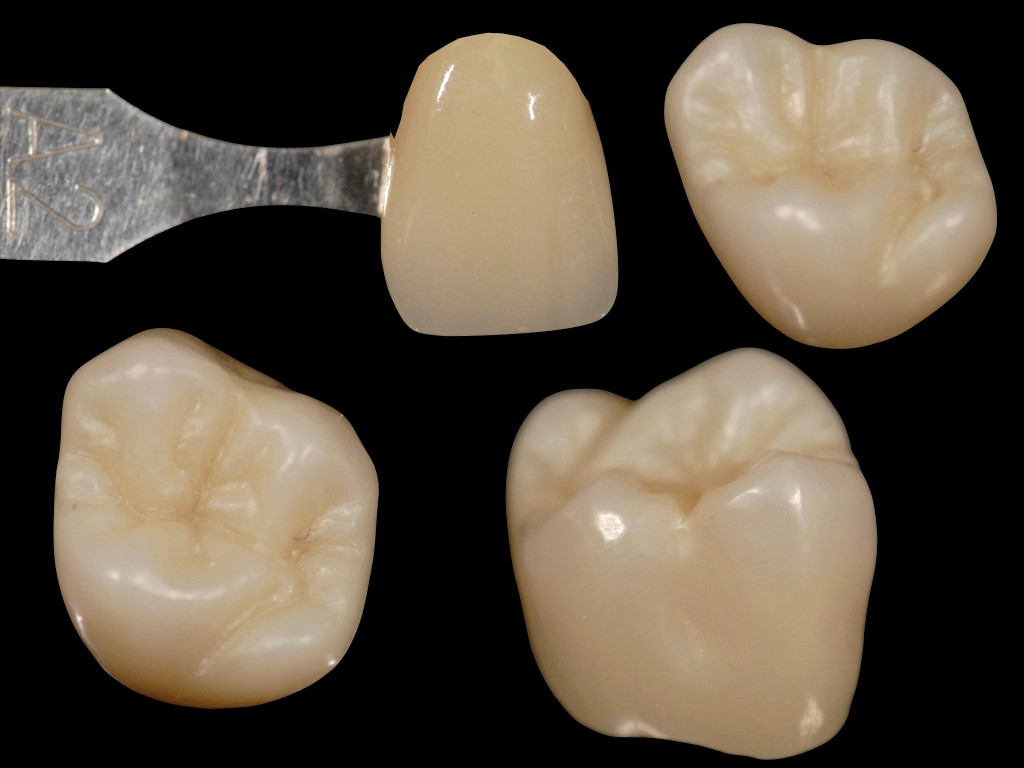
Coloring zirconia can be a tricky proposition when using white zirconia discs, so many technicians have resorted to the pre-shaded variety. Even these have their own considerations when trying to achieve a correct shade.
Let us talk for a moment about some of the obstacles we need to think about as we reach for the answers.
Obstacle: Zirconia Does Not Look Like Feldspathic Porcelain or Lithium Disilicate.
Zirconia just doesn’t transmit light in the same manner as porcelain. You can get close, but zirconia will be just a bit different looking. It’s like when some old timers refer to gypsum, they say, “dirt is dirt”, referring to gypsums origin in the earth. If you have studied gypsum products and their manufacture, you will know that statement is not true. Unfortunately, I am hearing the same thing about zirconia discs. Not all discs are the same. Zirconia modifies light very differently than porcelain and ceramic.
Obstacle: Higher Strength Zirconia is Less Translucent
Before the zirconia disc gets to the laboratory, there are several manufacturing processes. This includes manufacturing to achieve a certain flexural strength, which can also dictate the translucency. . How the handlers of these processes do their job can make a difference in the coloring process later on. Work with a reputable manufacturer of zirconia discs. Find one that will tell you where their raw products originate, and the processes that went into the manufacturing. If you do not do this, you cannot expect consistency, as the company is just a pass through for another company’s production.
Obstacle: No One Wants an A4 Incisal
Now to pre-shaded discs. The monochromatic shaded discs are a consistent color all the way through. That includes the incisal (yes, an A3 disc yields an A3 body shade and A3 incisal). If you are working with a 60+ year old patient with worn cusps, you should be able to match the shade well. However, if you need the incisal are to look like youthful incisal, you may have to use a lower chroma shade and add a stain in blue or violet to the incisal area. Stains are metallic oxides and they block the light, which reduces the overall value (greyness). Your other option is to fire an incisal from an add-on porcelain, which is a dissimilar material. There have been beautiful successes, and some failures at the junction of these materials.
Obstacle: Controlling the Color
Let’s look at white, uncolored discs. Color applied prior to sintering, penetrates the zirconia depending upon how the manufacturer controls the density of the zirconia powder in the disc. Then when sintered, the color migrates. If you do not want color in a certain spot (like the incisal) you will need a blocker. In pits and grooves, you may need an intensifier. Once again, how the zirconia accepts this colorant depends upon how it is manufactured. Also, all color kits will not necessarily work with all zirconia products. It is wise to ask your zirconia manufacturer if they have qualified any of the colorant systems or if they have created their own. Once they have qualified a coloring system, they should also have some general instructions for application. These instructions will enable you to achieve a shade match. If you are looking for custom shading and the “next step up”, then you are going to need to take a course or two, or spend the time figuring it out, just like you did with regular ceramics.
Obstacle: Positioning is Everything
Some technicians will say, ‘then I want a multi-layer disc”, that gives me everything, incisal, gingival and body. These types of discs are slowly becoming available; however, you still need the talent of your CAD/CAM technicians to place the object correctly in the disc. The placement of the design within the software image of the disc, combined with the contraction of the zirconia when sintered, will produce the proper gingival to incisal transition.
Post-sintering staining, glazing and/or polishing will produce the final color/shade appearance. If in the end, the result is not what you are looking for, then a change needs to happen in any or all of the above combinations to achieve your vision.
If you have not looked into the Vericore Zirconia products from Whip Mix, you should. All of our zirconia materials are qualified with colorants. For a comprehensive step-by-step process on coloring these Vericore Zirconia materials, please visit the Manuals section of the Resource Library.
